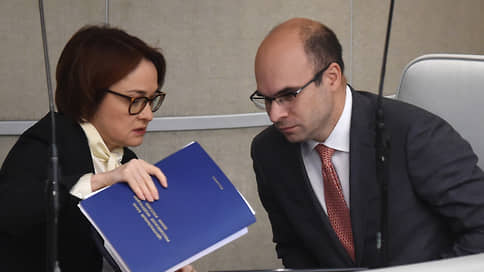The Central Bank expects a slowdown in lending in response to the key rate increase
[ad_1]

In the coming weeks, the Bank of Russia expects the effect of raising the key rate in the form of a slowdown in lending. Experts, however, are confident that this will happen no earlier than October. The slowdown will primarily affect unsecured retail and SMEs; mortgages and large businesses will feel the consequences to a lesser extent. The profitability of banks, market participants believe, will not suffer.
Deputy Chairman of the Central Bank Alexey Zabotkin, during an extended meeting of the State Duma Committee on the Financial Market, said that in the coming weeks the regulator expects operational data on a decrease in the pace of lending in the Russian Federation in response to an increase in the key rate. He clarified that against the backdrop of preferential programs, the slowdown is happening more slowly than possible.
Last week, the Board of Directors of the Bank of Russia decided to increase the key rate by 100 basis points, to 13% per annum. The regulator explained that they will evaluate the feasibility of its further increase at upcoming meetings.
“We specially, in an extraordinary way, today clarified the forecast because serious changes have occurred in terms of exchange rate dynamics and lending growth rates, which are in many ways higher than what we predicted,” said the head of the Central Bank, Elvira Nabiullina, on September 15.
At the same time, the Central Bank updated its forecasts for lending growth. According to new estimates by the Bank of Russia, the growth of corporate lending in 2023 will be 14–18% (previously expected 12–16%). The forecast for lending to individuals in 2023 was left unchanged at 15–19%, and the forecast for the growth rate of mortgages was also maintained at 17–21%.
At the same time, expectations for corporate lending growth for 2024 have been reduced to 7–12% (previously 9–14%), retail lending – 7–12% (previously 9–14%), mortgages – 9–14% (previously 10). -15%). Forecasts for lending dynamics in 2025 and 2026 remained unchanged: overall growth by 8–13%, in corporate and retail – also 8–13%, in mortgage – 10–15%.
NKR Managing Director Mikhail Doronkin believes that a slowdown in lending will most likely be noticeable as early as October. September will be quite successful in terms of issuances, the expert explains, since borrowers are seeking to obtain already approved loans at old rates.
According to Yuri Belikov, Managing Director for Validation at Expert RA, “in the foreseeable future” loan issuance will slow down in all retail segments. “Mortgage lending is due to conservative premiums on the risk weights of loans with a non-optimal ratio of the down payment and the borrower’s debt load, which come into force in October, as well as due to an increase in the entry threshold for preferential programs and an increase in market mortgage rates,” explained Mr. Belikov. – Consumer lending – due to tightening macroprudential limits and rising rates. Car loans – due to rising rates.”
As Anastasia Terekhina, a partner at the auditing and consulting company FBK, notes, retail lending will slow down first of all. This will happen in all segments, but in unsecured lending the decline in rates will be the greatest: “Mortgages and car loans may be slightly less affected by the increase in rates.”
In corporate lending, the rate of disbursement of funds to small and medium-sized businesses may decrease, Mr. Belikov believes. Lending to large corporate clients, the expert clarifies, will not suffer significantly, because “in any case, they need to refinance the debts generated in 2020–2022.”
One of the significant risks Anastasia Terekhina sees is a decrease in the credit quality of clients due to an increase in debt burden against the backdrop of an increase in rates. “In the corporate segment, sensitivity to rate increases may be lower,” adds Ms. Terekhina. “Business is able to pass on the increase in the cost of raising funds to the end consumers of its services.”
At the same time, experts do not expect a direct negative impact of the lending decline on bank profitability. “Despite the decrease in volumes, rising rates imply an increase in interest income,” explains Ms. Terekhina. “At the same time, there is a floating rate that will automatically bring a revaluation of assets.” According to her, floating rates “are used predominantly by large banks on large credit checks.”
[ad_2]
Source link





